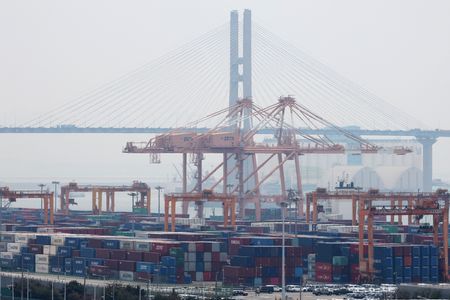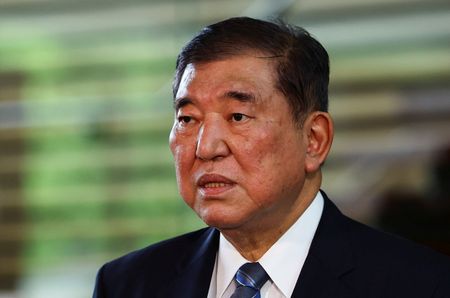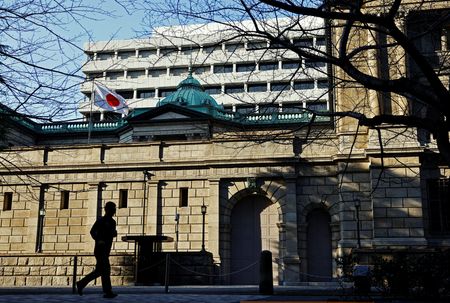By Leika Kihara
TOKYO (Reuters) -Japan’s super-long government bond yields have spiked to record highs, as mounting political calls for tax cuts and big spending draw investors’ attention to the country’s fiscal woes.
The rise in yields complicates the Bank of Japan’s (BOJ) quest to wean the economy off a decade-long stimulus programme including by slowing its huge bond purchases.
Here is a guide on how the BOJ and government could respond:
WHY ARE SUPER-LONG BOND YIELDS RISING?
Shrinking demand from long-term domestic investors like life insurers and pension funds and a slowdown in the BOJ’s purchases have left the market with a dearth of buyers for super-long Japanese government bonds (JGBs).
Foreign investors have been piling into the illiquid market, stoking greater market volatility than in the past.
More importantly, investors are demanding higher premium for Japan’s fiscal troubles as Prime Minister Shigeru Ishiba faces growing political pressure for big spending and tax cuts ahead of an upper house election slated for July.
WHAT ARE THE PRESSURE POINTS?
The rise in super-long yields alone won’t have any big impact on mortgage rates and corporate borrowing costs, most of which are based on shorter-term rates in Japan.
If the rise spreads across the yield curve, however, the consequent increase in borrowing costs for firms and households could hurt the economy. Higher yields raise the cost of funding Japan’s huge public debt and constrain future fiscal spending.
The market dysfunction also complicates the BOJ’s plan to trim its huge balance sheet. A delay in quantitative tightening (QT) could restrict the central bank’s options when fighting the next economic downturn.
HOW COULD THE BOJ RESPOND?
The BOJ is unlikely to take immediate action unless the entire JGB market descends into panic sell-off mode. Having ended a policy capping bond yields around zero last year, its focus is on reviving market functionality.
In an interim review due next month, the BOJ is likely to make no major change to its existing bond taper plan running through March. While it left scope to intervene in times of extreme market stress, the threshold for intervention is high.
But the BOJ may make technical tweaks to its regular market operation, such as changing the composition of bonds it buys. To avoid upending markets, it may also maintain or slow the pace of taper in a plan for fiscal 2026 onward, which is due next month.
HOW COULD THE GOVERNMENT RESPOND?
The Ministry of Finance (MOF), which oversees debt issuance, has been mum so far, and appears in no mood to take action to soothe market jitters.
With market players already complaining of over-supply, the MOF could reduce the size of super-long JGB issuance possibly after a regular meeting with investors. The next such meeting could happen in mid- to late June.
Another option would be for the MOF to buy back super-long JGBs before maturity, though this is highly unlikely for now.
HOW COULD RISING YIELDS AFFECT BOJ’S MONETARY POLICY?
The BOJ says its QT is unrelated to monetary policy, which is set by controlling short-term rates rather than bond yields. That means bond yield moves alone won’t have a direct impact on the pace and timing of future hikes in short-term rates.
But that argument masks some vulnerabilities. The BOJ may be forced to pause rate hikes if bond yields spike in a way that hurts market and business confidence. With uncertainty over U.S. tariffs clouding the economic outlook and keeping markets volatile, the BOJ may see good reason to go slow in both rate hikes and bond tapering.
(Reporting by Leika KiharaEditing by Shri Navaratnam)










